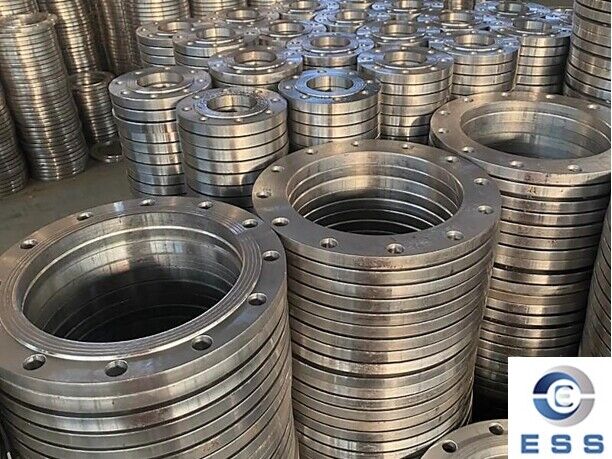
Reliable flange manufacturer usually has mature production processes and technologies, strict quality
control systems and perfect testing methods. They will strictly screen raw
materials to ensure that the materials used meet relevant standards and
requirements. During the production process, processing and assembly are
carried out in strict accordance with process specifications to ensure the
accuracy and sealing performance of the products. In addition, these
manufacturers will also conduct comprehensive product testing to ensure that
each flange has undergone strict quality control to meet the needs and requirements of
users. So how to judge whether the product quality of flange manufacturers is
reliable?
Judgment of whether the product quality of flange manufacturers is
reliable can be carried out from the following aspects:
1. Appearance inspection
The surface of high-quality flanges should
be smooth, free of defects such as cracks, burrs, bubbles, corrosion and rust.
The forging surface should be smooth and free of defects such as forging scars
and cracks; the machined surface should also be free of burrs, harmful
scratches, etc.
In addition, neat appearance, no damage, no
rust and other phenomena are also important characteristics of high-quality
flanges.
2. Dimension measurement
Use measuring tools such as vernier
calipers, straight rulers, depth calipers, etc. to measure the key dimensions
of the flange, including inner diameter, outer diameter, thickness, bolt hole
diameter and hole spacing. These dimensions must be strictly inspected
according to the drawings or relevant standards to ensure the dimensional
accuracy of the flange.
3. Material and chemical composition
analysis
Analyze the chemical composition of the
flange material through a spectrometer (such as X-ray fluorescence
spectrometer, emission spectrometer) to ensure that it meets relevant standards
and design requirements. The chemical composition of the material directly
affects its mechanical properties and corrosion resistance.
4. Nondestructive testing
Use ultrasonic flaw detectors, X-ray
imaging technology, magnetic particle flaw detection and penetration testing to
detect defects inside and on the surface of the flange, such as cracks,
inclusions, pores, etc.
5. Pressure test
Before leaving the factory, the
manufacturer will perform a pressure test on the flange to ensure that the
product is qualified before it is put into the hands of customers. Before the
pressure test, the air in the pipe should be removed and water should be filled
for infiltration. After the test pipe section is filled with water, it should
be fully immersed under the condition of not more than the working pressure
before the pressure test. Check whether there is leakage at the joint
connection, and observe whether the pressure drop meets the standard within the
specified time.
6. Hardness test
For sealing rubber rings with certain
hardness requirements, hardness tests can be carried out to ensure that their
hardness meets the national requirements.
7. Manufacturer's qualifications and
reputation
Choose products from manufacturers with
production qualifications, consider the brand influence of the products, and
purchase flange products with good brands; pay attention to contacting
after-sales to understand whether there is quality assurance. In addition,
flange heads produced by well-known and reputable manufacturers are usually
more guaranteed in quality.
Summary
Judgement of flange quality requires many
aspects, including checking whether the appearance is smooth and defect-free,
measuring the dimensions to ensure compliance with the standards, analyzing the
chemical composition of the material, using non-destructive testing to check
internal and surface problems, conducting pressure tests to see if there are
any leaks, and performing hardness tests on sealing rubber rings with
requirements. At the same time, pay attention to the manufacturer's
qualifications and reputation, and choose products from reliable manufacturers.













 Eastern Steel Manufacturing Co.,Ltd not only improve product production and sales services, but also provide additional value-added services. As long as you need, we can complete your specific needs together.
Eastern Steel Manufacturing Co.,Ltd not only improve product production and sales services, but also provide additional value-added services. As long as you need, we can complete your specific needs together.










